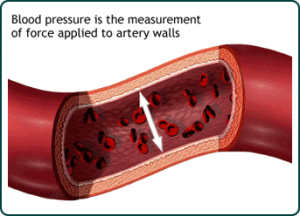Norvasc is a drug that acts like a calcium channel blocker (CCB). Its generic name is Amlodipine and it improves blood flow. It is usually given to those who need to control their high blood pressure or hypertension, chest pain or angina and other coronary artery diseases. This drug can be used just by itself or in combination with other drugs. It is prescribed for adults and children who are at least 6 years old.
This drug has been evaluated for safety in at least 11,000 patients in the United States and other countries. It can be taken safely for it is generally well-tolerated at doses of up to 10 mg daily. The adverse reactions experienced by patients are mostly mild or moderate.
Norvasc for High Blood Pressure
 High blood pressure develops when your blood is pushing too hard against your blood vessels. Norvasc relaxes your blood vessels which let your blood flow more easily. It relaxes the smooth muscles in the arterial wall, decreasing peripheral resistance and thus lowering your blood pressure. By using this drug, you are lowering your risk of having a stroke or heart attack.
High blood pressure develops when your blood is pushing too hard against your blood vessels. Norvasc relaxes your blood vessels which let your blood flow more easily. It relaxes the smooth muscles in the arterial wall, decreasing peripheral resistance and thus lowering your blood pressure. By using this drug, you are lowering your risk of having a stroke or heart attack.
Norvasc for Angina
Angina is a pain or discomfort that keeps coming back when part of your heart does not get enough blood. This condition feels like a pressing or squeezing pain, usually occurring in your chest particularly under your breastbone. There are times that you can feel the pain in your shoulders, neck, arms, jaws or back. This drug will improve blood flow to the myocardium. Taking Norvasc will give you relief from this kind of pain.
Considerations before Taking Norvasc
You must first consider several factors before taking this drug.
- You have to tell your doctor if you have liver disease or congestive heart failure.
- You can’t drink alcohol while taking this drug for it may increase the chances of experiencing its adverse side effects.
- You should consider this drug as just a part of your total program of getting rid of whatever ailment you are now experiencing. Your program should also include proper diet, sufficient exercise, weight control, and the taking of other medications as prescribed by your doctor.
- You also need to inform your doctor about the other kinds of drugs you are taking in treating your high blood pressure or your angina.
- You can expect your chest pain to increase upon taking your first doses of Norvasc, or when you increase your dose. To be safe, call your doctor if the pain persists or is getting severe.
- You should not take Norvasc if you are allergic to amlodipine.
- If you are taking other beta-blockers like Corgard, Coreg, Betapace, Blocadren, Normodyne, Tenormin Zebeta and others, don’t stop taking them abruptly. Consult your medical provider first before drastically changing your treatment therapy. Suddenly quitting can expose you to serious heart problems which Norvasc may not be able to prevent.
How to Take Norvasc
Your doctor is qualified to give you the right doses of Norvasc. You need to strictly follow his directions for the drug to be effective in controlling and treating your condition. Whatever dosage the doctor prescribed, you should not take the drug in larger or smaller amounts, or longer than he has directed.
Norvasc is often taken only once a day. Sometimes, your doctor may vary your dose to ensure that you get the right amount of treatment.
Norvasc Dosages
For obvious reasons, dosages of Norvasc for adults are different from dosages for children.
- Adults with high blood pressure – the usual minimum dose of Norvasc are 5 mg once a day, and the most is 10 mg. once a day.
- Those who are fragile, elderly and those with hepatic insufficiency may start with as little as 2.5 mg a day. This dose should also be adjusted according to the blood pressure goals.
- For chronic stable or vasopastic angina patients, the recommended dose is 5 – 10 mg per day. The lower those are recommended for the elderly and patients with hepatic insufficiency.
- For patients with coronary artery disease, the recommended dosage is 5 – 10 mg per day. Clinical studies show that majority of these patients can tolerate 10 mg once a day.
- Children from 6 to 17 years old can take 2.5 to 5 mg per day. There are no studies yet on this age group taking more than 5 mg once a day.
- Norvasc Side Effects
As in other kinds of drugs, Norvasc has its share of adverse side effects. Some of the side effects you may experience when taking Norvasc are the following:
- Swelling of legs and ankles
- Stomach pain
- Tiredness, extreme sleepiness
- Dizziness and nausea
- Heart palpitations
- Flushing
- Arrhythmia
Most of these side effects are mild and moderate therefore, there is no reason to be overly fearful of these side effects.
Share This